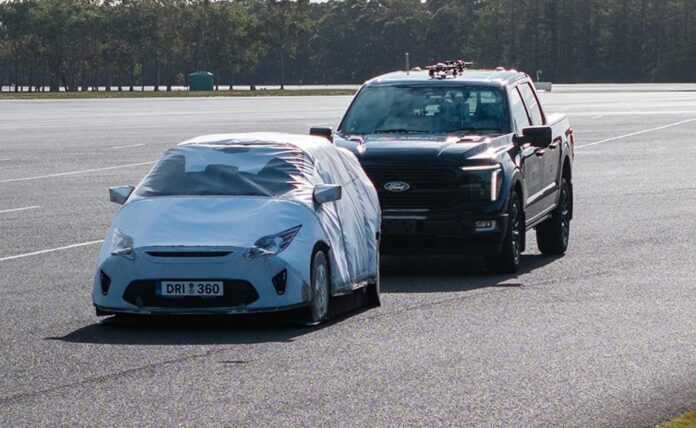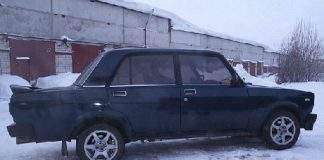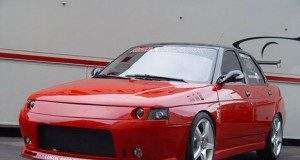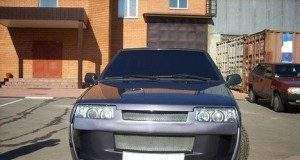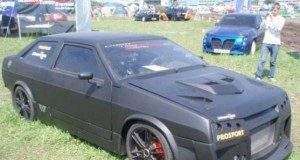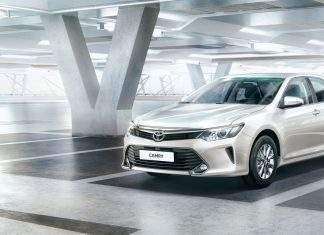For the first time, independent Australian safety authority ANCAP has put popular American full-size pickups under the microscope. The results? A mixed bag with the Ford F-150 taking the top spot against rivals like the Ram 1500, Toyota Tundra, and Chevrolet Silverado.
ANCAP’s assessment focused on Advanced Driver Assist Systems (ADAS), which are essentially the suite of technology designed to prevent crashes. This inaugural “Large Utilities ADAS Safety Comparison” involved rigorous testing of these systems without any physical crash tests being conducted. Notably, this is the first time ANCAP has assessed American pickups for safety and no physical crash testing was undertaken with any vehicle in the group.
The decision to evaluate these vehicles stems from their surging popularity Down Under. Sales of full-size pickups have skyrocketed by a staggering 270% since 2019, reaching approximately 22,500 units annually. This growth prompted ANCAP CEO Carla Hoorweg to emphasize the importance of safety in these larger vehicles: “Larger vehicles pose a bigger threat to other road users than passenger cars…The best way to reduce the potential risk of fatalities and serious injuries from large vehicles is to make sure they do the best possible job at avoiding a crash.”
Adding another layer of intrigue to this comparison, ANCAP included the Toyota LandCruiser 70 Series. Although significantly older in design compared to its American counterparts, the iconic off-roader qualified due to its planned increase in gross vehicle mass (GVM) beyond 3500kg in 2024.
Interestingly, the veteran LandCruiser managed to outperform the newer Chevrolet Silverado despite having fewer active safety features. ANCAP acknowledges this as a crucial learning point and has pledged to develop a comprehensive testing framework that will encompass crash protection and driver vision for future evaluations.
Testing Scenarios: A Glimpse into the Evaluation
The vehicles were put through their paces at the Australian Automotive Advanced Research Centre (AARC) near Anglesea, Victoria, navigating 48 different scenarios designed to test various ADAS systems. These included common real-world situations such as:
- Urban Intersections: Navigating intersections with other vehicles and pedestrians.
- Pedestrian Crossings: Avoiding collisions with pedestrians on the road.
- Reverse Scenarios: Detecting and avoiding children while reversing.
- Cyclist Interactions: Identifying and reacting appropriately to cyclists in various situations.
- Rear-End Collisions: Preventing rear-end crashes when approaching vehicles ahead or behind.
- Motorcycle Encounters: Safely maneuvering around motorcycles.
The Results: A Spectrum of Safety Performance
ANCAP uses a clear grading system: Platinum (80-100%), Gold (60-79%), Silver (40-59%), Bronze (20-39%), or Not Recommended (0-19%).
Here’s how the tested vehicles fared:
- Ford F-150 Platinum SWB: Achieved a top-tier Platinum rating with 81%, lauded for its strong performance in AEB, particularly avoiding rear-end collisions and excelling in scenarios involving cyclists and motorcyclists.
- Ram 1500: Received a respectable Gold rating.
- Toyota Tundra & LandCruiser 79 Series: Both earned Silver ratings; however, the LandCruiser was criticized for lacking advanced lane support systems.
- Chevrolet Silverado 1500 LTZ: The lowest performer with a Bronze rating (27%), specifically struggling in car-to-cyclist scenarios and speed assistance features. Despite achieving a “foundational car-to-car” AEB score, the Silverado fell short when it came to protecting vulnerable road users.
This inaugural ANCAP assessment sheds light on the safety capabilities of popular American pickups, highlighting both strengths and areas for improvement within this growing vehicle segment. The evaluation also underscores ANCAP’s commitment to continually evolving its testing framework to ensure all vehicles, regardless of size or origin, meet increasingly stringent safety standards.












